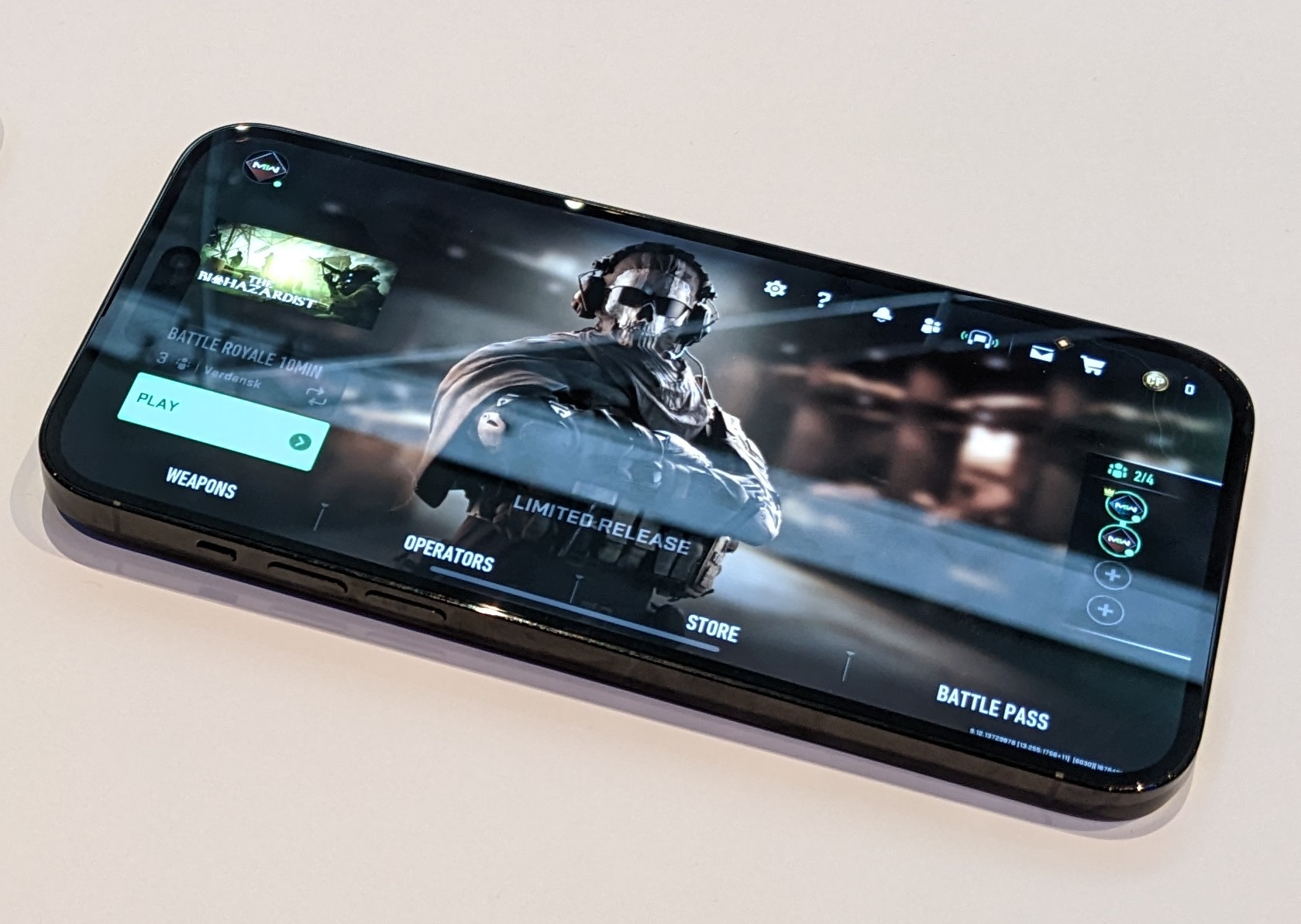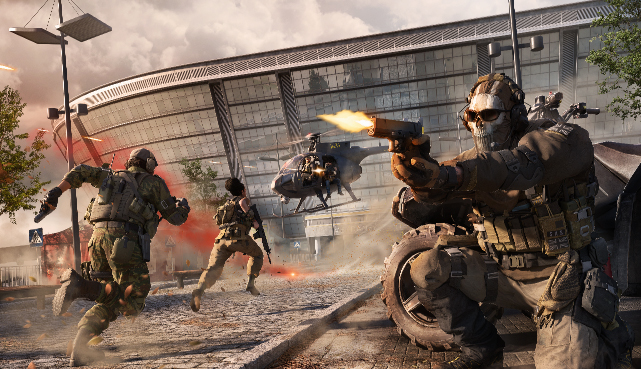Call of Duty: Warzone Mobile is much better than I expected it to be
Call of Duty: Warzone Mobile offers surprisingly good touchscreen controls

I didn’t really expect Call of Duty: Warzone Mobile’s touchscreen controls to work. While touch controls may work fine for augmented reality games, endless runners and turn-based RPGs, they tend toward imprecision and inaccuracy, even at the best of times. Playing a first-person shooter with a console controller instead of a mouse and keyboard is difficult enough; I could only imagine how well I would do once the physical input was gone entirely.
I won the match, as it turns out.
Call of Duty: Warzone Mobile was one of the games on display at an Apple press event highlighting the iPhone manufacturer’s latest advances in gaming. The company showed off everything from Apple Arcade’s extensive lineup on Apple TV, to The Medium running natively on Macs, to inventive fitness games from the Apple Entrepreneur Camp.
In fact, Call of Duty: Warzone Mobile was something of an oddity in that regard. It’s not designed by Apple; it’s not exclusive to iOS; it’s not part of Apple Arcade. But it does provide a perfect showcase for how well iOS can run mobile games, as well as how those games are starting to overcome the limitations of their platform.
Nailing the basics

Before we dive into the specifics, I should point out that I’m not a hardcore Call of Duty fan. I’ve played about half-a-dozen entries in the long-running series, and neither loved nor hated them. But from the perspective of a generalist gamer who enjoys a good first-person shooter now and then, Call of Duty: Warzone Mobile seems to nail the basics.
First off, the game is exactly what it sounds like: a mobile version of the popular Call of Duty: Warzone battle royale online game. It’s not a straight mobile port of Warzone, offering somewhat different maps and gameplay mechanics. But you’ll maintain progression between both games on a single account — and your progression from Call of Duty: Modern Warfare II will factor in as well.
As such, the premise of the game is simple. You take control of an “operator” (a soldier with a particular appearance) and drop into a map with up to 120 players. You gather firearms, explosives and armor plates as you explore abandoned buildings, then use what you find in fast and furious firefights. The map gets smaller over time, forcing players to eventually confront each other in an intense finale.
While there’s a lot going on in the Warzone Mobile screen, it’s all pretty intelligible. You drag on the left side of the screen to move, and on the right side to adjust the camera. How fast you drag your finger determines how fast you move. Large, distinct haptic buttons on the right let you sprint, shoot or equip armor. Simply tap the gun you want to use, find an opponent, get them in your crosshairs, and fire. There’s even an auto-fire option, if you want to focus on building up your movement skills first.
Using one finger on your left hand to move and one finger on your right hand to operate the camera and fire your weapon is surprisingly intuitive, and not all that different from holding a controller. My only real complaint about the control scheme is that the haptic buttons on the right feel pretty cramped. I often fired when I meant to move the camera, and vice versa. But an Activision rep pointed out that while touchscreen shooters may feel foreign to old-school gamers like us, they’re second-nature to Gen Z and younger players, some of whom are already claiming that they can go toe-to-toe with controller-toting adversaries. Call of Duty: Warzone Mobile supports both Bluetooth controllers and controller mounts, but there are no plans to separate players by input at the moment.
Ideal circumstances

My Call of Duty: Warzone Mobile match lasted about 10 minutes, and during that time, I had just about the full gamut of game experiences. I dropped into a landing zone; I poked around buildings for weapons and ammo; I gunned down other combatants; I got gunned down myself; I had a teammate revive me; I later revived him after a firefight gone wrong; I gathered loot from airdropped containers; I found a terminal to buy new equipment. While I never found the experience quite as intuitive as playing on a console or a PC, I also found myself focusing on the combat most of the time rather than what I was doing with my fingers.
However, it’s important to remember that I was playing the game under circumstances that most other players won’t experience. I had stellar Wi-Fi in a dedicated event space. I was on a team with two representatives from Activision, who know the game’s ins and outs better than most players will. Additionally, since the game is currently in a pre-release state, the vast majority of our opponents were bots. Real players will be more cunning — and, as discussed above, many of them will come to the game having already mastered FPS with touch controls.
It's also worth mentioning that Call of Duty: Warzone Mobile is hardly the first mobile FPS game, or the first one with touch controls, or the first one from a major publisher, or the first one that’s part of an established series. The game will also suffer from some inherent drawbacks to the mobile platform. The iPhone gets less comfortable to hold as it heats up; mobile connection strength is inherently unpredictable; demanding games chew through the battery much faster than everyday productivity.
Even so, I came away from Call of Duty: Warzone Mobile feeling mostly good about the experience — despite my ambivalence about the series and my distaste for mobile games in general. Call of Duty: Warzone Mobile doesn’t have a solid release date yet, but it should be out later this year, and you can preregister on both iOS and Android now. If you want to get a taste for how the next generation of gamers might experience FPS gameplay, it may be worth at least a few hours of your time.
Sign up to get the BEST of Tom's Guide direct to your inbox.
Get instant access to breaking news, the hottest reviews, great deals and helpful tips.
Marshall Honorof is a senior editor for Tom's Guide, overseeing the site's coverage of gaming hardware and software. He comes from a science writing background, having studied paleomammalogy, biological anthropology, and the history of science and technology. After hours, you can find him practicing taekwondo or doing deep dives on classic sci-fi.

